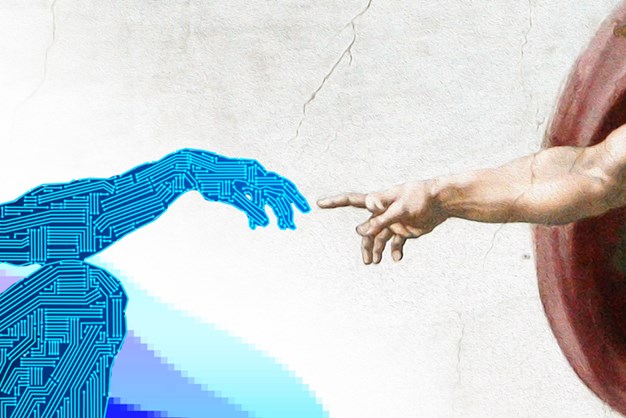For years, chatbots have been a staple in customer service. However, with advancements in AI and machine learning, chatbots can now fulfill more sophisticated roles in various industries, from e-commerce to healthcare.
Chatbots have evolved from simple rule-based systems to sophisticated AI-driven conversational agents. With the integration of natural language processing (NLP) and deep learning, modern chatbots can understand user intent, emotions, and context, providing a more human-sounding and personalized user experience. These advancements are a big reason why chatbots save up to 2.5 billion hours for businesses thanks to customer support interactions alone.
In an age where artificial intelligence is expanding the way businesses can solve customer issues, chatbots provide your company with an opportunity to improve your customer’s online experience. However, it’s important to understand what kind of chat service you need and what you need to do to properly implement and support this service.
What You Need to Consider When Selecting a Chatbot
With AI and machine learning evolving so rapidly, choosing a chatbot solution remains a daunting task for any website owner. It’s critical to address the following factors when you’re ready to invest in a chatbot.
Your Organization’s Purpose and Goals
Before you start searching for chatbots, you need to ask a simple question – why do you need a chatbot for your business? Keep the following criteria in mind when you’re ready to invest in a chatbot.
- Objective Definition: Clearly outline what you want the chatbot to achieve. Is it for answering frequently asked questions, booking appointments, or guiding users through a purchase?
- Audience Understanding: Know your audience's preferences and behaviors. For instance, younger demographics might prefer a more casual tone, while a professional audience might appreciate a formal approach. You should also consider how the chatbot needs to respond to sensitive information or the emotional states of users. Chatbots might be robots, but they don’t need to come off as robotic.
- Feedback Mechanism: Ensure there's a system for users to provide feedback on their chatbot experience. This feedback will help refine chatbot performance over time. Consider who in your organization will oversee implementing these adjustments to the chatbot.
Integration and Compatibility
Have you ever bought something and it didn’t work with whatever technology you have at home? It’s really upsetting, so plan for the following factors so it doesn’t happen with your chatbot.
- Platform Integrations: Make sure the chatbot solution can integrate with tools you already use, like Customer Relationship Management (CRM) systems or email marketing software.
- Mobile Optimization: A sizeable percentage of your users will interact with your chatbot over a mobile device. Ensure your chatbot functions seamlessly on all device types so that all your users are happy with the experience.
Customization and Scalability
There are plenty of chatbots out there, but there are only a few that are right for your business. Make sure your ideal chatbot can match and grow with your needs.
- Branding: You should be able to customize the chatbot with your brand's colors, tone, and overall feel. This branding is important as it provides a consistent experience for users.
- Growth Adaptability: As your business expands, your chatbot should be able to handle increased interactions and more complex tasks without the need to rebuild it or constantly switch platforms. Make sure your ideal chatbot can scale with your business before you invest in it.
- Multilingual Support: If you serve a global audience, consider a chatbot that can interact in multiple languages. Recent advances in AI technology will make this much easier as the technology improves.
Data Security and Compliance
You knew this would show up eventually. Anything your business touches should be as secure as possible to protect you and your users, including your chatbot.
- User Data Protection: Ensure that the chatbot platform follows best practices in encrypting and storing user data. You may not want your chat platform to use your customers’ data to train their AI model.
- Regulatory Adherence: Does your organization need to abide by data protection regulations in your industry and region? If so, you’ll want to factor that into your chatbot solution.
- Transparency: Your chatbot shouldn’t hide data security details from users. Inform users how their data will be used and provide options for them to opt-out if desired.
Ongoing Training and Maintenance
The work doesn’t end when you choose a chatbot. Even as AI makes it easier to break down human communication over time, you still need people to get the chatbot to work. Don’t forget to factor the following work into your future plans.
- Regular Updates: Technology and user preferences change. Regularly update your chatbot's AI model, training data if using a large language model-based chatbot (LLM).
- User Interaction Analysis: Monitor how users interact with the chatbot. Identify common issues or questions that the chatbot struggles with and address them.
- Iterative Improvement: Use feedback and performance metrics to continuously refine the chatbot's responses and functionalities.
Human Handoff
Chatbots are a great way to get conversations started (and leads generated), but sometimes people need to step in and finish the job.
- Seamless Transition: If a user's query is too complex for the chatbot, ensure a smooth handoff to a human representative. Identify who within your organization will hand the handoff.
- Training: Train your human staff to take over from where the chatbot left off, ensuring the user doesn't have to repeat themselves.
- Availability Indication: If human agents are offline, the chatbot should inform users about the expected wait time or suggest returning during business hours.
Costs
If it isn’t making dollars, then it isn’t making sense. Make sure the money adds up when you’re weighing your chatbot options.
- Setup Expenses: Consider the initial costs of setting up the chatbot, which might include platform fees, customization, and integration.
- Operational Costs: These are ongoing expenses like monthly/annual platform fees, maintenance, and potential costs for human agents supporting the chatbot.
- Return on Investment (ROI): Measure the chatbot's impact on metrics like customer satisfaction, reduced support tickets, or increased sales to determine its value to your organization.
Download: The Pre-Project Website Design Checklist
Building a new website is a long, complicated process. Download our pre-project website design checklist to keep track of everything you need to address when building a new site for your business.
The Future of Chatbots for Business
With advancements in AI, chatbots are becoming more intuitive and human-like at a break-neck pace. Integration with augmented reality (AR) and virtual reality (VR) will only further enhance these customer experiences. Expect emerging AI technologies like ChatGPT to make these robotic assistants an increasingly common interaction option for your users.
Choosing the right chatbot solution requires a thorough understanding of your business needs, user expectations, and the latest technological trends. Partnering with experts, like Aztek's web design and development team, can ensure a smooth implementation and maximize the benefits of integrating a chatbot into your digital strategy. Reach out today to talk to us about your chatbot options.



